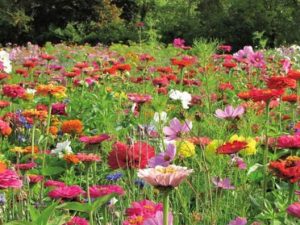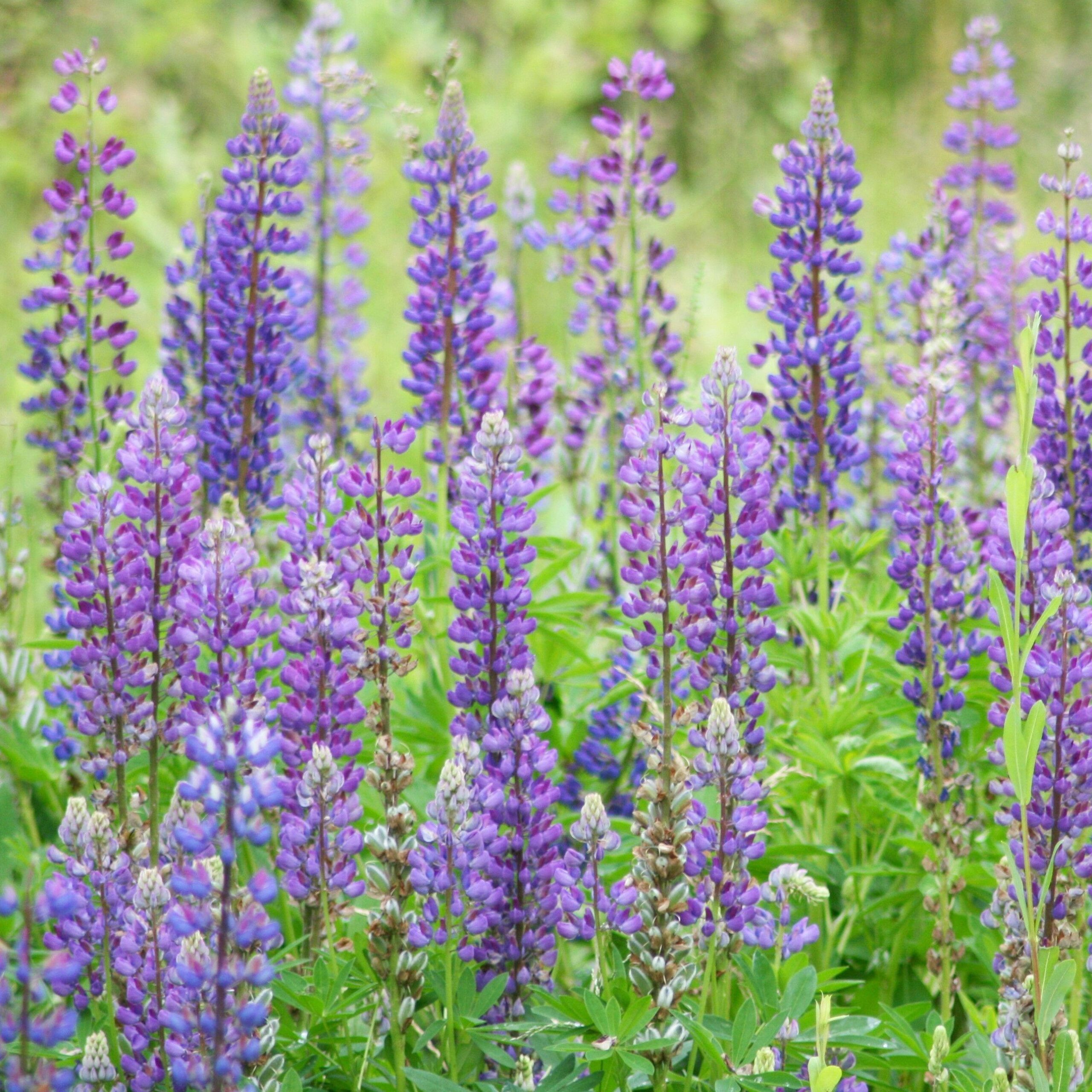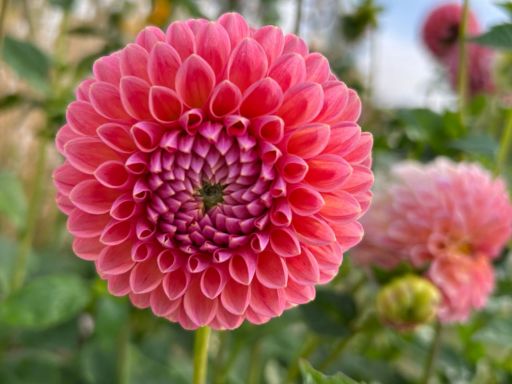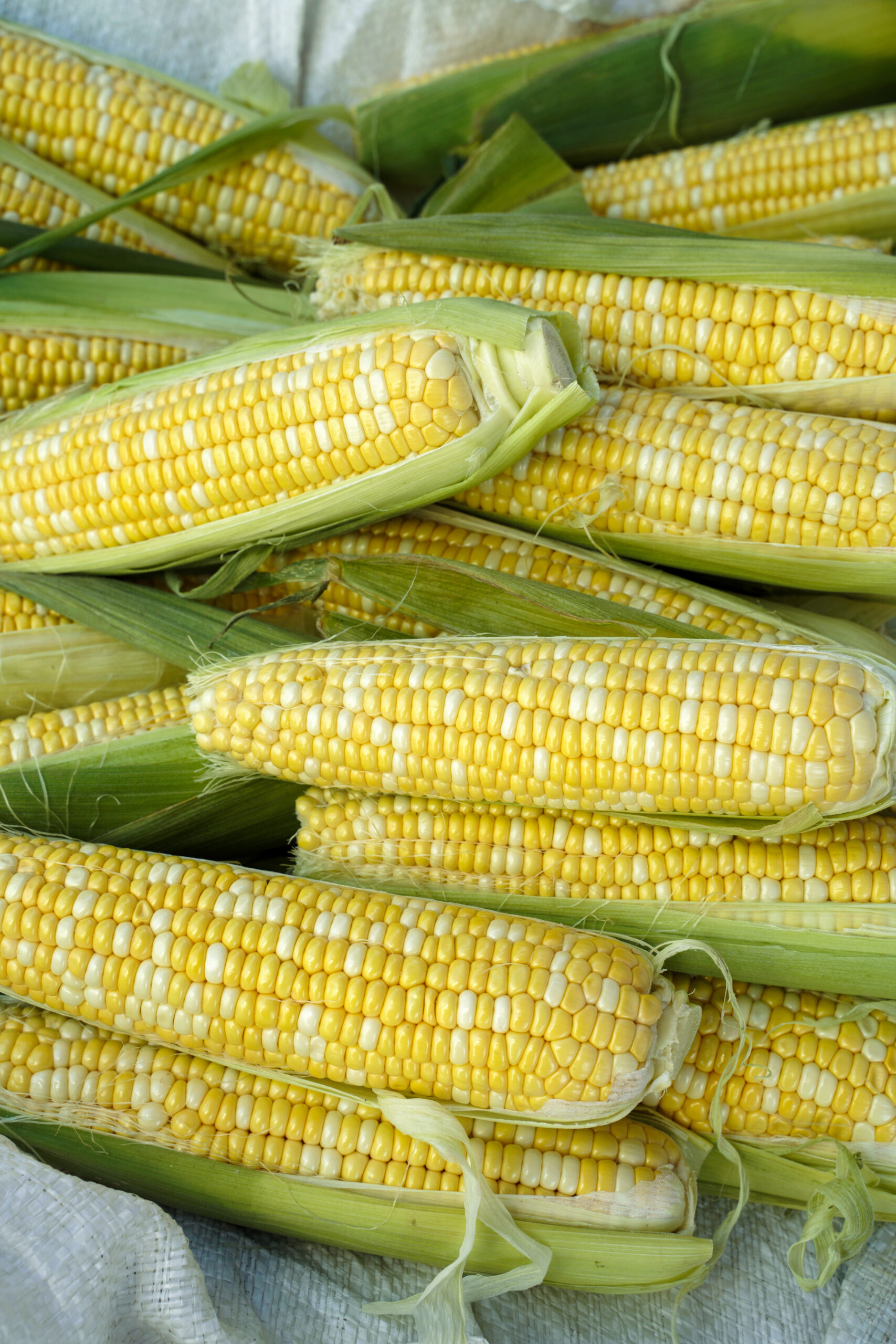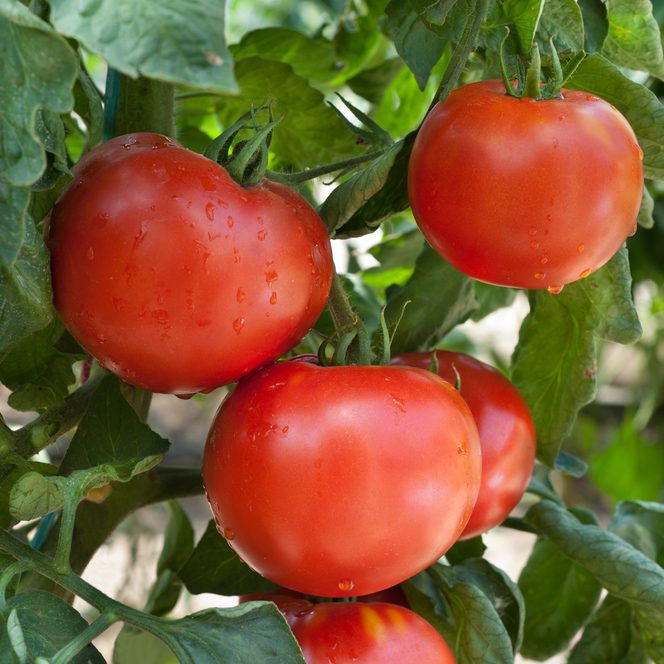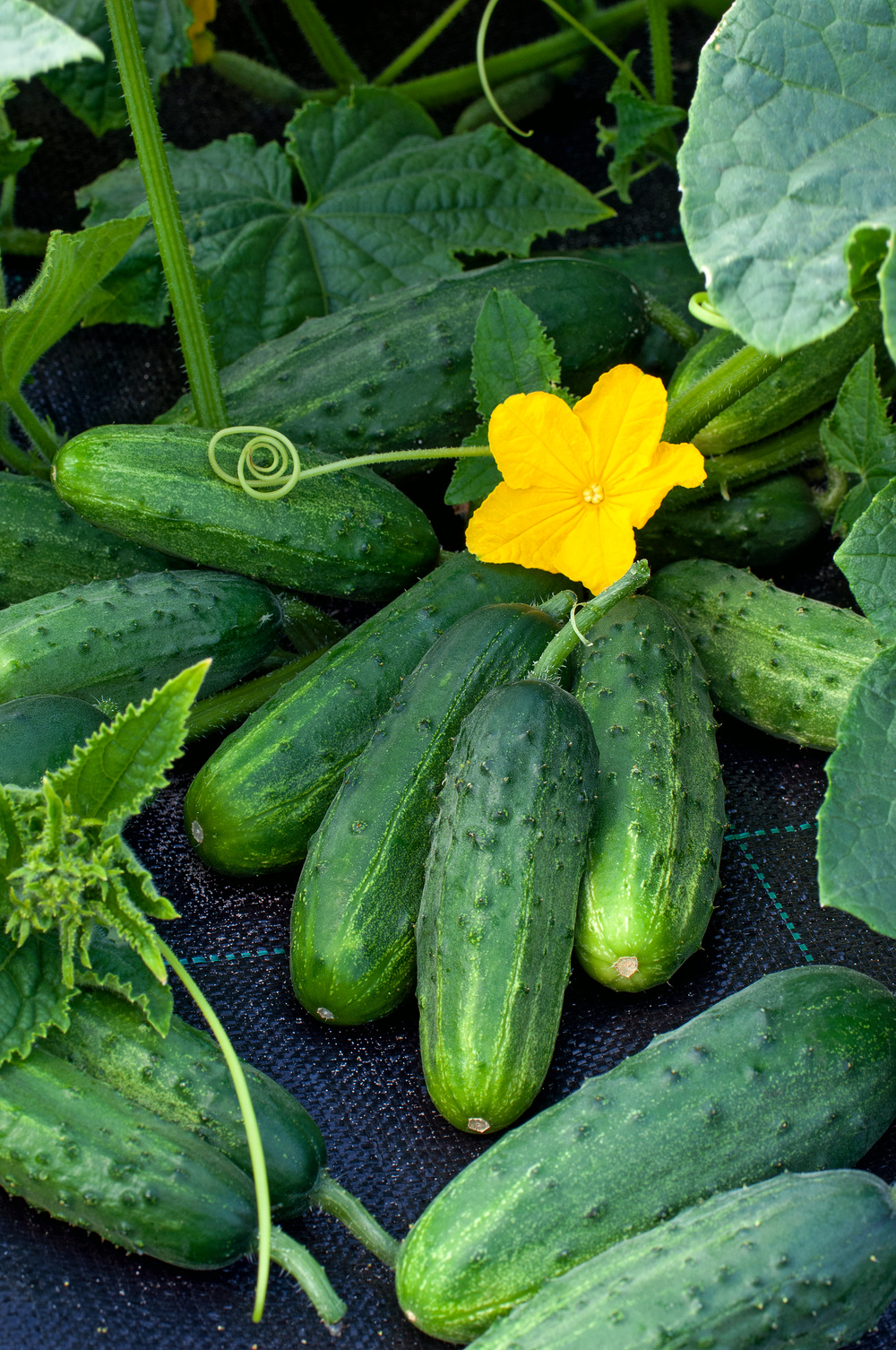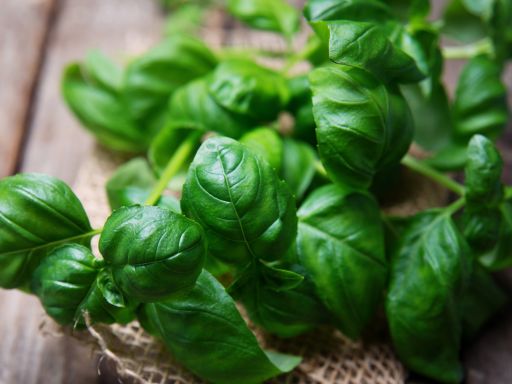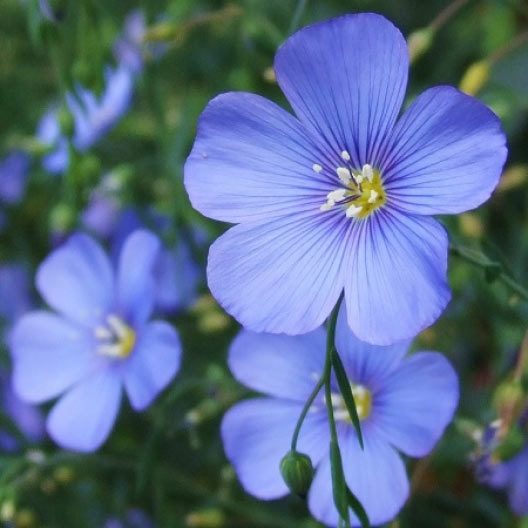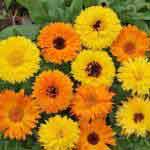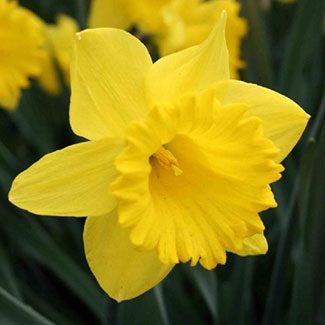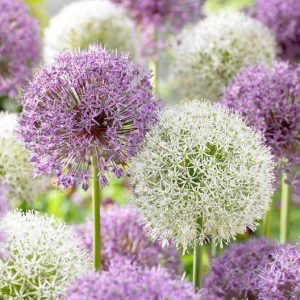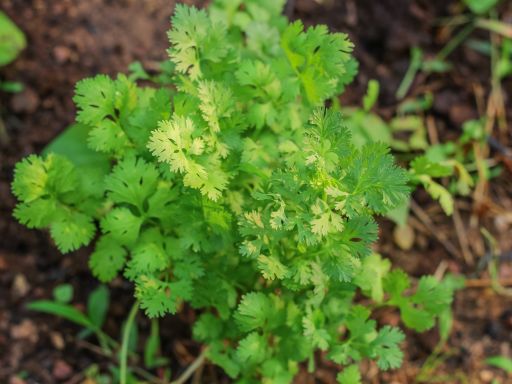Gardening in Zone 9
Ah, sunshine! Gardening in zone 9 allows for a wide range of plants to thrive thanks to its warm climate and extended growing season. With mild winters and hot summers throughout this region, zone 9 accommodates edible plants like fruit trees, herbs, and heat-loving vegetables which flourish alongside vibrant perennial flowers and ornamental grasses. This zone 9 planting guide can assist with selecting plants suited for your area’s conditions, ensuring an abundant garden. See Zone 9: Spring for garden projects and the best flowers and vegetables to plant during that season; and see Zone 9: Fall for gardening tasks and planting possibilities later in the year.
First and Last Frost Dates
To choose the best plants and determine optimal planting times in zone 9, it’s important to know your area’s frost dates and extreme minimum temperatures. You can easily find this information using the Eden Brother’s USDA hardiness zone map, found here.
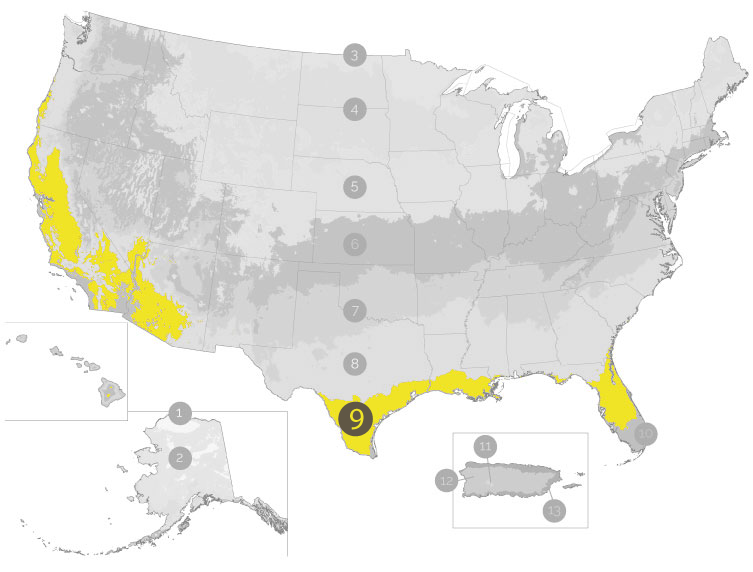
In zone 9, the first frost typically occurs between November 30 and December 31, with the last frost happening between January 30 and February 28.
Average Growing Season: 300 days
States found in zone 9 include California, Louisiana, Florida, and parts of Texas, Arizona, and Georgia. For specific plant recommendations suited to zone 9, refer to the “What’s Growing in Spring?” and “What’s Growing in Fall?” section.
Zone 9: Spring
Garden Maintenance and Projects
During spring in zone 9, plants begin to take off, marking the time to refresh your garden and prepare for the warm months ahead. Key maintenance tasks include:
- Clean Garden Beds – Remove weeds and any leftover debris to make space for new growth
- Improve Soil – Test soil and add compost or amendments to enhance fertility and drainage
- Prepare for Planting – Loosen soil and shape beds for warm-season crops and flowers
- Mulch – Apply mulch or landscape fabric to conserve moisture, regulate soil temperature, and suppress weeds
- Check Irrigation Systems – Ensure water lines, sprinklers, and soaker hoses are functioning before the peak heat arrives
- Maintain Perennial Flowers – Add or divide flowers like coreopsis, salvia, and irises to ensure adequate space and plant health
What’s Growing in Spring?
Take a road trip through the sunny south and you’ll be in awe of all that’s blooming. Wildflowers like bluebonnets, drummond phlox, and Indian blanket color the landscape. Or cruise the California coast to see favorites like California poppy and lupine. In the vegetable garden, you’ll see peas, lettuce, and brassicas—greens that you’re unlikely to see this early in any other part of the country.
Flower Seeds to Plant in Spring
Spring is the time to focus on planting heat-tolerant plants for zone 9. Many ornamental grass varieties and perennial flowers thrive in the warm climate. Heat-loving perennial flowers also do well, providing vibrant blooms throughout the growing season. The following propagation methods are tailored for zone 9 plants, ensuring optimal growth:
Directly Seed Outdoors After Last Frost:
- Blanket flower
- Black-eyed Susan
- Lupine
- Portulaca
- Lobelia
- Zinnias
Start Indoors and Transplant out After Last Frost:
- Lantana
- Verbena
- Coreopsis
- Snapdragons
For gardeners looking to fill a meadow or large landscape with gorgeous blooms, our specially formulated regional and state wildflower mixes are perfect. They remove the guesswork of what to plant when, and they’re filled with varieties that do well in zone 9. Each mix contains 15 to 25 different wildflower species that are perfectly adapted for the conditions in your area.
Flower Bulbs to Plant in Spring
Spring is the best time to plant bulbs and corms for stunning perennial flowers. Here are some great plants suited for zone 9a and 9b:
Dahlias are a particularly stunning choice with intricate flowers that come in a range of vibrant colors. They’re incredibly easy to grow and offer a wide range of bloom styles. Dinnerplate dahlias are huge and fluffy, while pompon dahlias are often compact and perfectly round. Try cactus dahlias for the most unique variety.
Vegetables and Herbs to Plant in Spring
Vegetable gardeners should stick with heat-tolerant plants for zone 9, although some cool-season crops can survive in early spring when planted in late fall/early winter. Consider adding drought tolerant plants like lavender and rosemary in arid climates for more diversity and a thriving garden during hot and dry months.
Direct sow (after last frost):
Start indoors (plant after last frost):
Perennials:
Other Springtime Planting Possibilities
These zone 9 plants—including ornamental grasses, microgreens, and drought tolerant plants and rare and unusual flowers you won’t find in cooler climates—are all well-suited to thrive in the warm climate of the region and can bring beauty and bounty to your garden throughout the year:
- Ornamental grasses including pampas grass, foxtail millet, and Mexican feather grass
- Microgreens including radishes, peashoots, and sunflower shoots
- Berries including strawberries, blackberries, goji berries
- Drought-tolerant plants like yarrow, butterfly milkweed, blanket flower, and marigold
- Rare and unusual flowers like perennial passion fruit and canna lilies, and Venus flytrap.
Looking Ahead to Summer
As summer approaches, it’s important to prepare for the heat when caring for zone 9 plants. Zone 9 can vary widely in terms of precipitation and humidity, so gardeners should consider their specific climate—whether it’s arid or humid—when selecting plants and planning their gardens. Increase watering for vegetables, fruits, and perennial flowers and apply mulch to retain moisture and suppress weeds. Consider adding shade cloth for delicate or less heat-tolerant plants. Be mindful of pests that thrive in the heat such as aphids and mites.
Zone 9: Fall
Garden Maintenance and Projects
Fall is a great time to refresh your garden and set up zone 9 plants for success in the cooler months ahead:
- Clean up garden beds to prevent pests and diseases from carrying over to the next session
- Cut back and prune summer-blooming plants to encourage healthy regrowth
- Mulch plants to retain moisture and insulate roots as temperatures fluctuate
- Plant cover crops to improve soil with nitrogen-fixing options like clover or vetch
- Divide perennial flowers such as daylilies and irises to prevent overcrowding
What’s Growing in Fall?
In zone 9, fall brings a stunning second wave of blooms, with vibrant flowers like rudbeckia and echinacea adding rich color and texture to the landscape. In the vegetable garden, cold-hardy vegetables like kale, broccoli, and carrots can be planted to enjoy during the cooler days of late fall and winter. The result is a garden that’s both productive and picturesque, blending beauty and bounty all season long.
Flower Seeds to Plant in Fall
Several perennial flowers thrive when planted in late fall in zone 9, enjoying cooler temperatures for strong spring growth. Consider these heat-tolerant varieties:
Direct Sow in Fall (can also be started indoors in early spring)
Start Indoors (seed late summer/early fall for late fall blooms)
Flower Bulbs to Plant in Fall
In zone 9, fall is the ideal time to plant perennial flower bulbs and corms that do well in warm climates, ensuring strong roots for vibrant blooms in spring and late summer:
Ranunculus make a gorgeous addition to the zone 9 spring garden when planted in fall, producing stunning, ruffled blooms in a variety of colors. If you’re not quite ready to plant, go ahead and order the bulbs you love—they can easily be stored for future planting.
Vegetables and Herbs to Plant in Fall
Fall is the best time to plant winter vegetables and other cool season crops, allowing for continuous harvests through winter and early spring. Use the following zone 9 planting guide as you prep for fall planting:
- Direct Sow in Fall: Radishes, arugula, spinach, kale, collards, beets, and carrots
- Herbs: Cilantro, dill, chervil, chives, lemon balm, fennel and parsley can all be direct sown or transplanted
- Garlic & Shallots: Plant in late fall for summer harvest the following year
- Perennial Vegetables: Asparagus, artichokes, rhubarb, horseradish, sorrel, and lovage do well when planted in fall or springtime
Other Fall Planting Possibilities
Round out your garden with plants suitable to zone 9a and 9b, including ornamental grasses, microgreens, and wildflower mixes.
- Ornamental Grasses including Mexican feather grass, foxtail millet, and pampas grass
- Microgreens like radish, arugula, kale, and mustard greens pack a nutritious punch for fall salads
- Wildflower Seeds sown in fall offer earlier blooms the following spring because they have been given a better chance of establishing a strong root system before the summer heat sets in. Our Regional Wildflower Mixes have been specially formulated for zone 9.
Looking Ahead to Winter and Early Spring
As winter approaches, it’s important to prepare for cooler months while setting up for the upcoming growing season. Tasks include:
- Winterize plants by mulching around perennial flowers, shrubs, and fruit trees to protect them from colder temperatures.
- Prune and trim evergreen shrubs and trees to maintain shape and remove dead or damaged branches
- Prepare soil by testing for nutrient levels and amending with compost or fertilizers as needed. Loosen soil to provide plants with adequate airflow.
- Start seeds indoors to get a headstart on spring vegetables
- Check irrigation systems by inspecting that hoses, sprinklers, and drip lines are in working order

